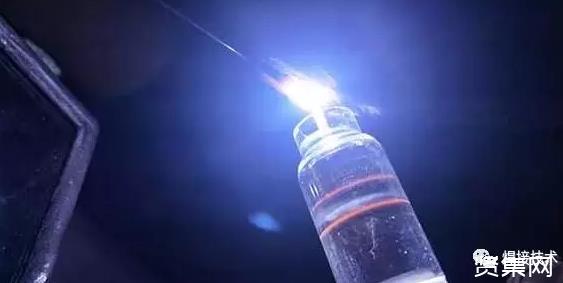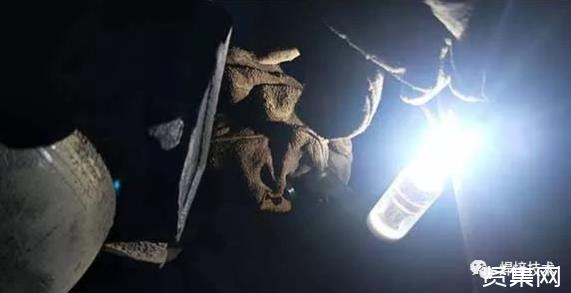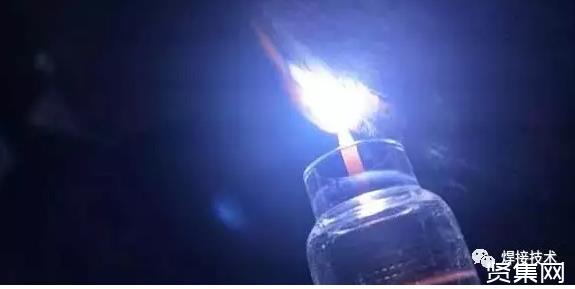There are many types of cracks in welded joints, and the measures and methods are explained in detail
- Categories:Industry News
- Author:
- Origin:
- Time of issue:2021-07-29 16:23
- Views:
There are many types of cracks in welded joints, and the measures and methods are explained in detail
(Summary description)In recent years, the application of low-alloy high-strength materials on special equipment has become more and more common, which is related to the high temperature and high pressure working conditions of boilers and pressure vessels. However, in the manufacturing process of special equipment, cracks are often found in the welds after heat treatment, especially for 2.25Cr- Materials such as 1Mo and 13MoNiMoR have attracted the attention of manufacturers.
01There are many types of cracks in welded joints
Crystal cracks: when the weld pool solidifies and crystallizes, in the temperature range where the liquid and solid phases coexist, due to the effects of crystal segregation and shrinkage stress and strain, the weld metal is cracked along the primary crystal grain boundary. Such cracks only occur in welds (including arc craters).
Liquefaction crack: during the welding process, under the action of the peak temperature of the welding thermal cycle, in the interlayer metal of the multi-layer weld and the metal near the base metal, due to the intergranular metal/heated remelting, under a certain shrinkage stress , The phenomenon of cracking along the austenite grain boundary is called "hot tearing" in some literature.
High temperature and low plasticity cracking: After the liquid phase crystallization is completed, the welded joint metal begins to cool from the plastic recovery temperature of the material. For some special materials, when it is cooled to a certain temperature range, due to the mutual strain rate and certain metallurgical factors The effect causes a decrease in plasticity and causes the weld joint metal to crack along the grain boundary. Generally, it occurs in the heat-affected zone farther from the fusion line than the liquefaction crack.
Reheating cracks: after welding, the cracks that develop along the austenite grain boundaries under certain conditions during the process of service at a certain temperature after the residual stress heat treatment or without any heat treatment of the weldment. In fact, reheat cracking is one of the main problems to be solved in the weldability of low-alloy high-strength steels, especially some low-alloy high-strength steels and In the welding seam of hot-strength steel thick plates, reheat cracks are often generated during the post-weld stress relief heat treatment process. The treatment of these defects is labor-intensive and time-consuming, which has a great impact on production. The following is a brief analysis of the formation mechanism of reheat cracks and the preventive measures and inspection methods in the manufacturing process.
02 Mechanism of reheat cracking
The formation of reheat cracks, in simple terms, is due to the high strengthening strength in the grain and the weaker grain boundary strength. During the post-weld heat treatment, the deformation during stress relaxation is concentrated on the grain boundary. Once the grain boundary strain exceeds the grain boundary At the limit of the strength of the boundary, it will cause cracks along the grain boundary.
(1) The internal cause of reheat crack formation during welding, the heat-affected zone near the fusion line is heated to about 1200°C, especially after the thick plate is heated many times, the grains are coarse, and the precipitation of strong carbides is slower during cooling In the same submerged arc welding, due to the large heat input, the grains in the middle of the weld are also coarser. During the subsequent SR treatment (480~680℃), carbides (V4C3, NbC, MoC, etc.) are in the crystals. The internal dispersion precipitates, thereby strengthening the intragranular (good intragranular thermal strength), so that during heat treatment, the strain during stress relaxation is concentrated on the grain boundaries; the coarse grains make the number of grain boundaries that bear strain drop sharply, and the same strain unit The grain boundary strain is greatly increased; in addition, during the post-weld SR treatment, low melting point impurities and trace elements such as B, Sb, Sn, As and so on segregate in the grain boundary, which weakens the plasticity of the grain boundary, and the strain exceeds the plastic limit of the grain boundary. Form cracking.
(2) External causes of reheating cracks The internal causes of reheating cracks are briefly described above. However, to produce reheating cracks, external causes are required. The generation of external causes should be considered from the welding residual stress and expansion stress.
In the post-weld stress relief heat treatment, the welding residual stress is reduced through relaxation creep deformation. When the deformation of the material is difficult to meet the deformation requirements, cracks will occur. In the welding zone, the presence of low melting point compounds, segregation and coarse grain embrittlement zone, due to insufficient grain boundary strength and toughness, can not resist creep expansion and deformat
- Categories:Industry News
- Author:
- Origin:
- Time of issue:2021-07-29 16:23
- Views:
In recent years, the application of low-alloy high-strength materials on special equipment has become more and more common, which is related to the high temperature and high pressure working conditions of boilers and pressure vessels. However, in the manufacturing process of special equipment, cracks are often found in the welds after heat treatment, especially for 2.25Cr- Materials such as 1Mo and 13MoNiMoR have attracted the attention of manufacturers.

01There are many types of cracks in welded joints
Crystal cracks: when the weld pool solidifies and crystallizes, in the temperature range where the liquid and solid phases coexist, due to the effects of crystal segregation and shrinkage stress and strain, the weld metal is cracked along the primary crystal grain boundary. Such cracks only occur in welds (including arc craters).
Liquefaction crack: during the welding process, under the action of the peak temperature of the welding thermal cycle, in the interlayer metal of the multi-layer weld and the metal near the base metal, due to the intergranular metal/heated remelting, under a certain shrinkage stress , The phenomenon of cracking along the austenite grain boundary is called "hot tearing" in some literature.
High temperature and low plasticity cracking: After the liquid phase crystallization is completed, the welded joint metal begins to cool from the plastic recovery temperature of the material. For some special materials, when it is cooled to a certain temperature range, due to the mutual strain rate and certain metallurgical factors The effect causes a decrease in plasticity and causes the weld joint metal to crack along the grain boundary. Generally, it occurs in the heat-affected zone farther from the fusion line than the liquefaction crack.
Reheating cracks: after welding, the cracks that develop along the austenite grain boundaries under certain conditions during the process of service at a certain temperature after the residual stress heat treatment or without any heat treatment of the weldment. In fact, reheat cracking is one of the main problems to be solved in the weldability of low-alloy high-strength steels, especially some low-alloy high-strength steels and In the welding seam of hot-strength steel thick plates, reheat cracks are often generated during the post-weld stress relief heat treatment process. The treatment of these defects is labor-intensive and time-consuming, which has a great impact on production. The following is a brief analysis of the formation mechanism of reheat cracks and the preventive measures and inspection methods in the manufacturing process.

02 Mechanism of reheat cracking
The formation of reheat cracks, in simple terms, is due to the high strengthening strength in the grain and the weaker grain boundary strength. During the post-weld heat treatment, the deformation during stress relaxation is concentrated on the grain boundary. Once the grain boundary strain exceeds the grain boundary At the limit of the strength of the boundary, it will cause cracks along the grain boundary.
(1) The internal cause of reheat crack formation during welding, the heat-affected zone near the fusion line is heated to about 1200°C, especially after the thick plate is heated many times, the grains are coarse, and the precipitation of strong carbides is slower during cooling In the same submerged arc welding, due to the large heat input, the grains in the middle of the weld are also coarser. During the subsequent SR treatment (480~680℃), carbides (V4C3, NbC, MoC, etc.) are in the crystals. The internal dispersion precipitates, thereby strengthening the intragranular (good intragranular thermal strength), so that during heat treatment, the strain during stress relaxation is concentrated on the grain boundaries; the coarse grains make the number of grain boundaries that bear strain drop sharply, and the same strain unit The grain boundary strain is greatly increased; in addition, during the post-weld SR treatment, low melting point impurities and trace elements such as B, Sb, Sn, As and so on segregate in the grain boundary, which weakens the plasticity of the grain boundary, and the strain exceeds the plastic limit of the grain boundary. Form cracking.
(2) External causes of reheating cracks The internal causes of reheating cracks are briefly described above. However, to produce reheating cracks, external causes are required. The generation of external causes should be considered from the welding residual stress and expansion stress.
In the post-weld stress relief heat treatment, the welding residual stress is reduced through relaxation creep deformation. When the deformation of the material is difficult to meet the deformation requirements, cracks will occur. In the welding zone, the presence of low melting point compounds, segregation and coarse grain embrittlement zone, due to insufficient grain boundary strength and toughness, can not resist creep expansion and deformation and cause crack failure.
Creep deformation is actually a process of thermal expansion. In this process, expansion tensile stress is generated to offset a part of the compressive stress generated during the welding process. When cooling and contraction, a contraction force is generated to offset part of the tensile force generated during the welding process. Stress, so that the peak stress is reduced. Therefore, in the stress concentration areas such as micro-defects, pores and slag inclusions in the welding zone, when the expansion force and the stress in this zone generate high peak tensile stress, when the peak value is greater than the strength value of the material, the original balance of maintaining non-failure will be broken And cracks occur. The state of the stress distribution in these stress-concentrated areas is very complicated, and it varies depending on the thickness position and the constraints of whether there is a takeover or not. For example, this kind of defect is located at the lower part of the V-groove welding, these defects are subjected to tensile stress, and when located on the upper part, they are subjected to compressive stress. This is also the reason why many reheat cracks mostly exist at the root of the weld zone. Because the composite surfacing transition layer is a welding of dissimilar steels, the structure is very complex, and it is in the area of tensile stress, so the tendency of reheating cracks is also great.
Preventive measures: From the analysis of the formation mechanism of reheat cracks, the preventive measures include the following aspects:
Strict control of raw materials: In the purchase of raw materials, the strong carbide-forming elements such as Cr, Mo, V, Nb, Ti, and B in the steel have a great influence on the formation of reheat cracks. Strict control is required, and sulfur can be formed. The content of S and P of the phosphorus eutectic should also have the same requirements when purchasing welding materials. Such measures are one of the more effective measures to solve the internal causes of reheat cracks.
Choose welding materials with low thermal crack sensitivity (strictly control the content of elements such as S, P, V, Nb), and take the lower limit of the weld metal strength.

Formulate reasonable welding specifications:
① Reduce the welding heat input as much as possible and control the temperature between preheating layers. These two determine the cooling conditions of the weld metal and have a great influence on the microstructure of the weld zone. Generally speaking, it is advantageous to adopt multiple layers of small heat input and to appropriately increase the cooling rate of the weld zone to help improve the microstructure, improve the impact toughness, and prevent the generation of hot cracks. However, a too low interlayer temperature will not be conducive to the escape of hydrogen, and there is a danger of cold cracks. Therefore, controlling the cooling rate and obtaining refined grains should focus on controlling the amount of heat input.
② Take appropriate preheating measures. Taking appropriate preheating measures can soften the hardness of the hardened layer, improve toughness, and improve crack resistance.
Control the welding process and reduce the amount of small defects: earnestly implement welding specifications, reduce small defects, and reduce the amount of deposited metal. The use of narrow gap welding is also an effective measure to control reheat cracks. Based on the above discussion, these tiny defects and defects that do not exceed the standard are stress concentration points. Therefore, during the process of heat treatment to release the stress, there are reasons for stress superimposition, causing reheat cracks. Therefore, it is also necessary to control these defects.
Control of welding residual stress: The welding residual stress is under the action of heat treatment creep expansion force, especially when the stress is superposed as tensile stress, the stress concentration point in the weld, the weak link of the grain boundary after the precipitation hardening zone produced by carbide , Can not resist strain to cause cracking. Therefore, before the heat treatment, the means to reduce the residual stress can also reduce the occurrence of reheat cracks. ①Using half-pass intermediate heat treatment. ②Using high-frequency ultrasonic impact method. Both of these methods can effectively reduce the welding residual stress.
Post-weld heat treatment: In the process of post-weld heat treatment, control the rate of heating and cooling to expand and contract slowly and uniformly to reduce the occurrence of reheat cracks.
03Methods of inspection and identification of defects
Generally used surface flaw detection can only specify whether there are defects. To be able to determine the real cause of the defects, the following methods need to be inspected:
Duplex metallographic method: Duplex metallographic method is often used for non-destructive inspection on site. When the workpiece is in vibration or the part is narrow, the metallographic method can be used. The prepared replica is easy to store for a long time, and can be observed, analyzed and photographed with a microscope in the laboratory. It is better to use the large workpiece metallographic inspection instrument in conjunction with the complex metallographic method.

04Preparation of the surface sample of the inspected part
The complex material can be 1~2mm thick plexiglass sheet, and also can use acetate fiber or nitrocellulose film (AC paper). The organic solvent can be chloroform, acetone, ethyl acetate, etc.
First cut the film into small pieces according to the required size. During operation, drop an appropriate amount of organic solvent on the surface of the prepared sample, and quickly cover the plexiglass sheet or film, and gently press it with your fingers or rubber to make the bubbles between them escape. After it is fully dried, it can be removed for observation and photographing.
In order to increase the tissue contrast, the test surface can be etched slightly deeper, or an appropriate amount of colorant can be added to the organic solvent.
05Microscopic inspection with metallographic inspection instrument for large workpieces
Microscopic inspections include pre-etching and post-etching inspections: before immersion, the main inspection samples are for cracks, non-metallic inclusions and defects caused during the sample preparation process; after etching, the main inspection samples are microscopic organize.
When observing, generally use the microscope to observe the whole structure of low magnification at 75-100 times. When you need to observe fine tissues, choose a suitable high magnification.
06Microscopic inspection of pipes and components
a Identify the types of non-metallic inclusions and microcracks in the material, observe their shape and distribution, and measure their number and size.
b Identify the composition of the microstructure of the test piece, the morphology, distribution and quantity of various tissues. Evaluate the grain size, band structure, non-metallic inclusions, Widmanstatten structure, spheroidized structure, decarburized layer, etc.
c Identify the characteristics of the organization, determine the state of the heat treatment process, and provide a basis for reformulating the heat treatment process when necessary.
d Identify whether the above defects are related to the detected cracks, etc.
Since reheat cracks are not produced during welding, but during heat treatment or operation, reheat cracks have a certain degree of concealment, and accidents are unpredictable, which will cause greater losses. Therefore, the appearance of reheat cracks must be considered in advance in the design, manufacturing, and inspection of special equipment.
Source: Welding Technology
Note: All pictures in the article are reprinted on the Internet, and infringement will be deleted!

Tel: 0571-88780081
Mail: Firmkim@cn-huaguang.com
Fax: 0571-887 80081
Post code: 311112
Add: No. 7 Yaojia Road, Liangzhu Street, Yuhang District, Hangzhou City, Zhejiang Province (Huaguang New Materials)

Douyin QR code

We chat number

WeChat public account
©2021 Hangzhou Fujing Welding Technology Co., Ltd. all rights reserved 浙ICP备2021023610号-1 300.cn Hangzhou
-
WeChat
-
Telephone
- Service Hotline 0571-88780081
- TOP


